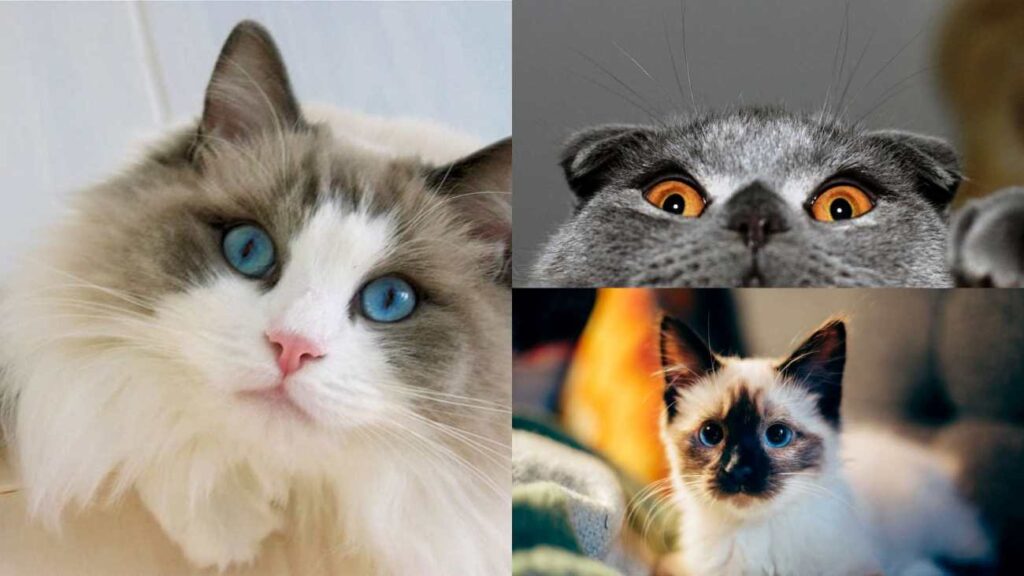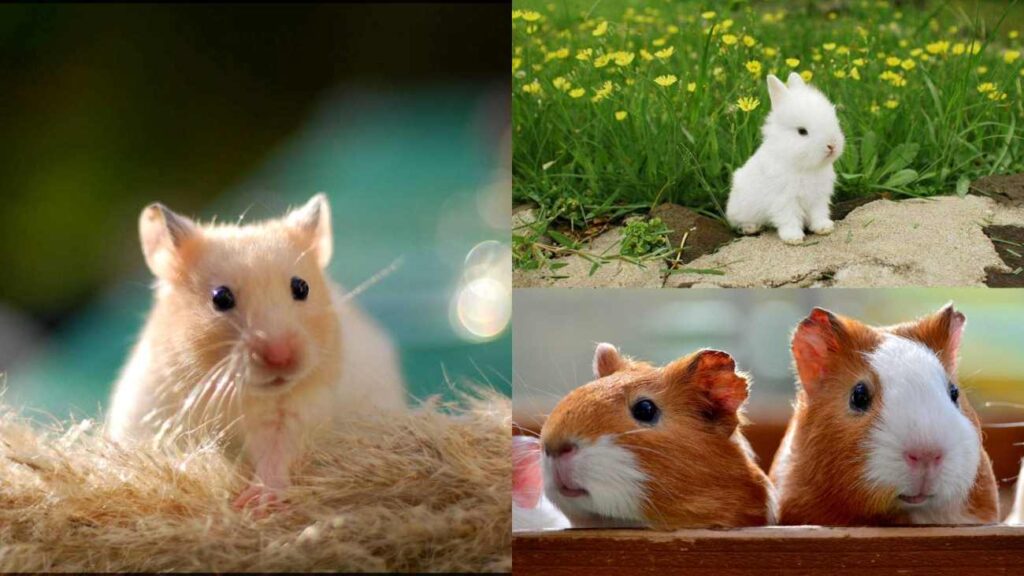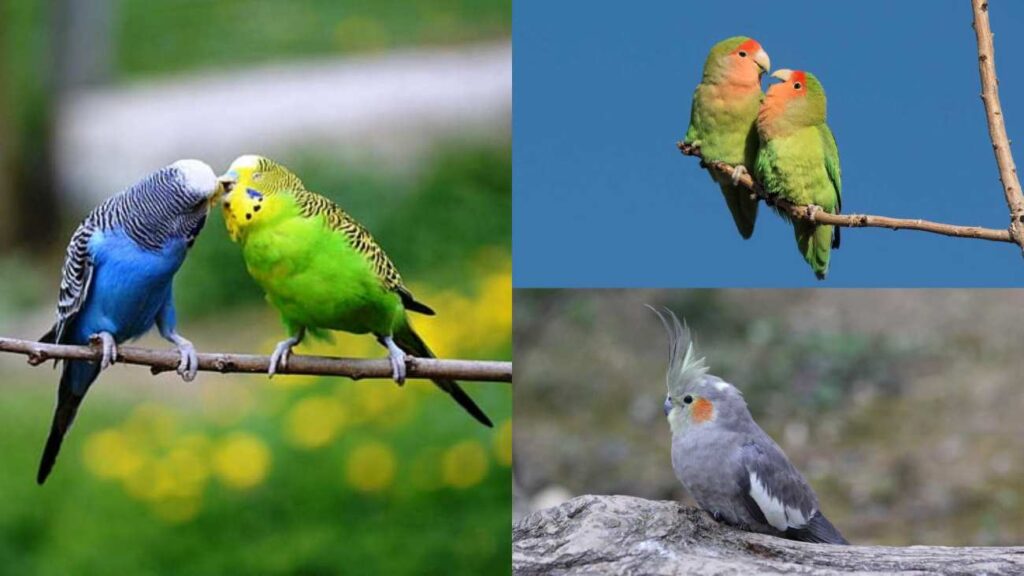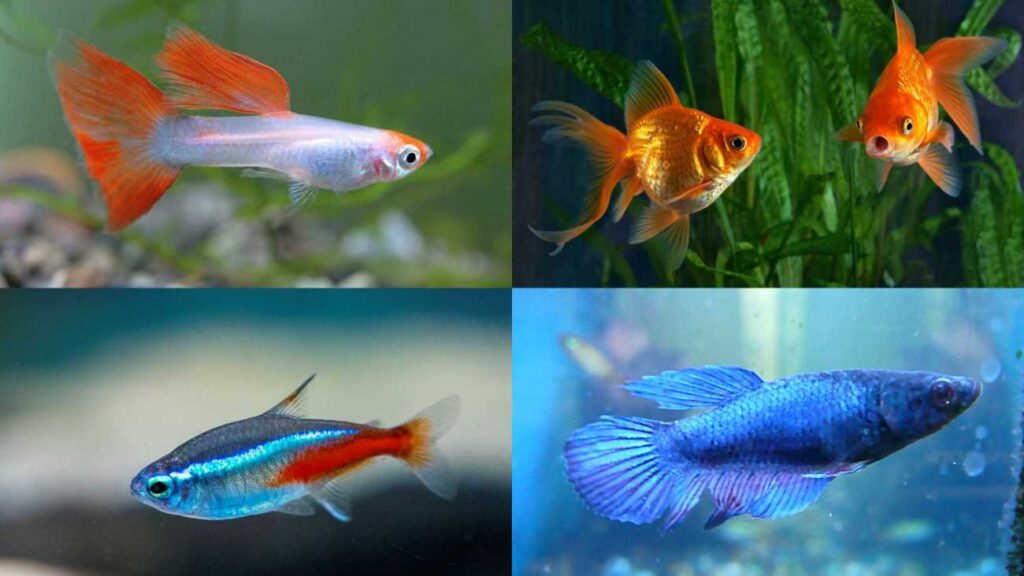Pets can bring immense joy, companionship, and valuable life lessons into the lives of children. For girls in particular, having a pet can provide a sense of responsibility, teach empathy and compassion, and offer unwavering friendship. However, with so many pet options available, it’s essential to consider which pets are best suited for girls based on their preferences, lifestyle, and the level of care required. In this article, we will explore some of the best pets for girls, covering popular choices like dogs, cats, small mammals, birds, fish, and even reptiles.
Table of Contents
Benefits of Having Pets for Girls
Before diving into the specifics of each pet type, let’s take a moment to appreciate the numerous benefits of having pets for girls. Pets offer unconditional love and emotional support, which can be particularly valuable during challenging times. They provide opportunities for girls to develop a sense of responsibility, as they learn to feed, groom, and care for their furry or scaly friends. Additionally, pets promote physical activity and playfulness, fostering a healthy and active lifestyle.
Factors to Consider When Choosing a Pet for Girls
When selecting a pet for a girl, several factors should be taken into account. Consider the girl’s age, personality, and preferences. Some children may prefer cuddly companions, while others may be more inclined towards independent pets. It’s important to assess the level of care required for each pet type and determine if it aligns with the girl’s capabilities and the family’s lifestyle. Furthermore, factors like allergies, living arrangements, and time commitment must be considered to ensure a suitable and harmonious match between the girl and her pet.
Dogs: A Girl’s Best Friend

There’s a reason why dogs are often referred to as man’s best friend, and the same holds true for girls. Dogs are loyal, and affectionate, and make wonderful companions for children of all ages. They provide a sense of security and are always ready for playtime or snuggles on the couch. Let’s explore why dogs are an excellent choice for girls, popular dog breeds suitable for them, and the responsibilities that come with owning a dog.
Reasons why dogs make great pets for girls
Dogs are known for their unwavering loyalty and love, making them ideal pets for girls. They offer constant companionship, which can be especially beneficial for girls who may feel lonely or seek a confidant. Dogs are also highly intuitive and can sense their owner’s emotions, providing comfort during difficult times. In addition, having a dog encourages physical activity as girls engage in playtime and walks, promoting a healthy lifestyle.
Popular dog breeds suitable for girls
When choosing a dog breed for a girl, it’s crucial to consider factors such as size, temperament, and energy level. Some popular breeds that are generally well-suited for girls include:
Labrador Retriever
Known for their friendly nature and love for play, Labrador Retrievers are excellent companions for girls. They are gentle, and patient, and enjoy being part of an active family.
Golden Retriever
Golden Retrievers are renowned for their kind and affectionate temperament. They are highly intelligent, easy to train, and are known to form strong bonds with their owners.
Beagle
Beagles are small to medium-sized dogs with a friendly and outgoing personalities. They are energetic, playful, and have a great sense of smell, making them well-suited for various activities and games.
Responsibilities of owning a dog
Owning a dog requires commitment and responsibility. Girls should be aware of the following responsibilities when considering a dog as a pet:
- Feeding and Watering: Girls need to ensure that their dog is fed a nutritious diet and has access to fresh water at all times. They should learn about the dietary needs of their specific dog breed and establish a feeding schedule.
- Exercise and Playtime: Dogs need regular exercise to maintain their physical and mental well-being. Girls should be prepared to take their dog for walks, engage in playtime activities, and provide opportunities for exercise and stimulation.
- Grooming and Hygiene: Proper grooming is essential to keep a dog clean and healthy. Girls should learn how to brush their dog’s fur, trim their nails, and clean their ears regularly. They should also be prepared to schedule regular visits to a veterinarian for vaccinations, check-ups, and necessary treatments.
- Training and Socialization: Dogs require training to learn basic commands, proper behavior, and social skills. Girls should be actively involved in training their dog, attending obedience classes if necessary, and dedicating time to socialize their pet with other dogs and people.
- Healthcare and Well-being: Girls should understand the importance of regular veterinary care for their dog. They should be prepared for preventive treatments, such as vaccinations and parasite control, and be observant of any signs of illness or discomfort in their pet.
- Love and Attention: Dogs thrive on love and attention from their owners. Girls should be ready to provide affection, spend quality time with their dog, and create a nurturing and loving environment.
Taking on these responsibilities demonstrates a girl’s commitment to the well-being and happiness of her canine companion.
Cats: Independent Companions

While dogs may be a girl’s best friend, cats offer a different type of companionship. Cats are known for their independent and curious nature, making them suitable pets for girls who appreciate a more laid-back and self-reliant furry friend. Let’s explore why cats are a great choice for girls, different cat breeds to consider, and how to take care of a cat.
Why cats are suitable for girls
Cats have a unique charm and can provide girls with endless entertainment and affection. They are generally low-maintenance pets, requiring less supervision and exercise compared to dogs. Cats are known for their grace, agility, and soothing purrs that can help relieve stress and anxiety. They are independent animals that can entertain themselves with toys and explore their surroundings, making them a good choice for girls with busy schedules or limited space.
Different cat breeds to consider
When choosing a cat breed for a girl, it’s important to consider factors such as size, temperament, and grooming needs. Here are a few popular cat breeds that are well-suited for girls:
Siamese
Siamese cats are known for their striking blue eyes, sleek coats, and talkative nature. They are sociable, affectionate, and enjoy being the center of attention. Siamese cats form strong bonds with their owners and can be playful and interactive companions.
Ragdoll
Ragdolls are large, gentle cats with stunning blue eyes and semi-longhair coats. They are known for their calm and docile temperament, often going limp when held, hence their name. Ragdolls are extremely affectionate and enjoy being cuddled and carried around.
British Shorthair
The British Shorthair breed is characterized by its round face, dense coat, and stocky build. These cats have a calm and easygoing nature, making them suitable for girls who prefer a more independent and less demanding pet.
Responsibilities of Owning a Cat
Caring for a cat involves several key aspects that girls should be aware of:
- Feeding and Watering: Girls should provide their cats with a balanced and age-appropriate diet. It’s important to feed them high-quality cat food and ensure they have access to fresh water at all times.
- Litter Box Maintenance: Cats are naturally clean animals and require a litter box for their bathroom needs. Girls should learn how to clean the litter box regularly and provide a clean and comfortable space for their cat to use.
- Grooming: Cats are known for their grooming habits, but they may still require assistance from their owners. Girls should brush their cat’s fur regularly to prevent matting and hairballs. They should also trim their cat’s nails and clean their ears as needed.
- Play and Stimulation: Cats need mental and physical stimulation to prevent boredom and maintain a healthy weight. Girls can engage in play sessions with their cats using toys, laser pointers, or interactive games. It’s important to provide scratching posts and climbing structures to fulfill their natural instincts.
- Healthcare: Regular veterinary check-ups are essential for a cat’s well-being. Girls should schedule vaccinations, deworming, and flea control treatments as recommended by their veterinarian. They should also be observant of any changes in their cat’s behavior, appetite, or litter box habits, as these can be signs of illness.
- Indoor Safety: To ensure the safety of their cats, girls should create an indoor environment that is free from hazards. This includes keeping toxic plants, chemicals, and small objects out of reach. Girls should also provide their cats with a comfortable and secure space to rest and retreat.
Cats can offer girls a sense of companionship and teach them about responsibility and empathy. By understanding and fulfilling their cat’s needs, girls can create a loving and harmonious bond with their feline friend.
Small Mammals: Cute and Cuddly Friends

Small mammals, such as rabbits, guinea pigs, and hamsters, can be delightful pets for girls. These furry companions are known for their cuteness and gentle nature. Let’s explore the advantages of small mammals as pets for girls, popular species to consider, and how to care for them.
Advantages of small mammals as pets for girls
Small mammals offer unique advantages as pets for girls. They are typically smaller in size, making them easier to handle and care for, especially for younger girls. These animals can provide a sense of comfort and companionship, as well as opportunities to learn about responsibility and nurturing. Small mammals often have endearing behaviors, such as hopping, squeaking, or burrowing, which can captivate girls and provide endless entertainment.
Popular small mammal species for girls
When choosing a small mammal pet, it’s important to consider factors such as temperament, care requirements, and space considerations. Here are a few popular small mammal species that are suitable for girls:
Rabbits
Rabbits are gentle, sociable animals that can form strong bonds with their owners. They come in various breeds, sizes, and coat types, offering a wide range of options. Rabbits require spacious enclosures, regular exercise, and a balanced diet of hay, vegetables, and pellets, as well as grooming to maintain their coat health.
Guinea Pigs
Guinea pigs are friendly, social animals that enjoy human interaction. They have a docile nature and are generally comfortable with being handled. Guinea pigs need a spacious enclosure with bedding, fresh hay, vegetables, and pellets as their primary diet. Regular nail trims and dental check-ups are also important for their well-being.
Caring for small mammals
Caring for small mammals requires attention to their specific needs. Here are some important aspects of small mammal care that girls should be aware of:
- Housing: Provide a suitable habitat for the small mammal, ensuring it has enough space to move around comfortably. Consider appropriate bedding material, hiding spots, and toys for mental stimulation. Regular cleaning of the enclosure is necessary to maintain a clean and healthy environment.
- Feeding: Research the dietary requirements of the specific small mammal species and provide a well-balanced diet. This typically includes a combination of hay, fresh vegetables, fruits, and specialized pellets. Offer clean water in a sipper bottle or shallow dish.
- Handling and Socialization: Small mammals benefit from gentle and regular handling to become comfortable with human interaction. Always support their bodies while handling and avoid sudden movements that may startle them. Gradually introduce them to different environments and socialize them with appropriate care.
- Exercise and Enrichment: Encourage physical activity and mental stimulation through interactive play and the provision of toys and tunnels. Small mammals often enjoy exploring and engaging in activities that simulate their natural behaviors.
- Healthcare: Regularly monitor the small mammal’s health and behavior. Consult a veterinarian experienced with small mammals for routine check-ups, vaccinations, and advice on preventive care. Be aware of common health issues and seek prompt veterinary attention if any concerns arise.
Small mammals can bring joy and companionship to girls, teaching them about empathy, responsibility, and the importance of meeting the needs of other living beings.
Birds: Colorful Feathered Friends

Birds are captivating pets that can provide girls with beautiful sights and enchanting melodies. Their colorful feathers and unique personalities make them fascinating companions. Let’s explore why birds are suitable pets for girls, what attractive bird species to consider, and how to meet the needs of pet birds.
Why birds are suitable pets for girls
Birds offer several qualities that make them ideal pets for girls. They can be highly social and enjoy interacting with their human companions. Birds are known for their intelligence and ability to mimic sounds, which can provide endless entertainment. Additionally, their vibrant plumage and graceful movements can be visually stunning, creating a sense of awe and wonder.
Attractive bird species for girls
When choosing a bird species for a girl, it’s important to consider factors such as size, temperament, and care requirements. Here are a few popular bird species that are well-suited for girls:
Budgerigar (Budgie)
Budgies are small, colorful parakeets that are known for their playful and interactive nature. They are relatively easy to care for and can be taught to mimic words and phrases. Budgies thrive on social interaction and can form strong bonds with their owners.
Cockatiel
Cockatiels are medium-sized parrots with distinctive crests and cheerful personalities. They are known for their ability to whistle tunes and bond closely with their owners. Cockatiels require mental stimulation, a balanced diet, and regular social interaction.
Lovebird
Lovebirds are small, sociable parrots that form strong pair bonds with their owners. They are known for their affectionate behavior and playful nature. Lovebirds thrive on social interaction and should be provided with a stimulating environment and regular out-of-cage time.
Meeting the needs of pet birds
Providing a suitable environment and meeting the needs of pet birds is essential for their well-being. Here are some important aspects to consider when caring for a bird:
Providing a suitable environment and meeting the needs of pet birds is essential for their well-being. Here are some important aspects to consider when caring for a bird:
- Housing: Birds require a spacious cage with room to move, stretch their wings, and explore. The cage should include perches of different sizes and textures, as well as toys to prevent boredom and provide mental stimulation. Regular cleaning of the cage is important to maintain hygiene.
- Diet: Birds have specific dietary requirements that should be met to ensure their optimal health. A balanced diet for pet birds typically includes a combination of high-quality bird pellets, fresh fruits, vegetables, and occasional treats. Consult a veterinarian or avian specialist for guidance on the specific dietary needs of the chosen bird species.
- Socialization and Training: Birds are social creatures and require regular interaction with their owners. Spend time bonding with the bird through gentle handling, talking to them, and providing opportunities for supervised out-of-cage exploration. Training can also be beneficial, teaching birds simple commands and tricks to stimulate their intelligence.
- Exercise and Flight: Birds need regular exercise and opportunities for flight to maintain their physical and mental well-being. Provide a safe and supervised space for the bird to spread its wings and fly. Flight time outside the cage can be a rewarding experience for both the bird and the owner.
- Enrichment: Birds are highly intelligent and require mental stimulation to prevent boredom. Offer a variety of toys, puzzles, and interactive games to keep them engaged. Rotate toys regularly to maintain their interest. Environmental enrichment, such as providing perches of varying heights and textures, also helps promote natural behaviors.
- Healthcare: Regular avian veterinary check-ups are crucial to monitor the bird’s health and catch any potential issues early on. Birds should be vaccinated, if recommended, and checked for common ailments. Provide a clean and stress-free environment to minimize the risk of disease.
By meeting these needs, girls can develop a rewarding and enriching relationship with their pet birds, enjoying their beauty, intelligence, and charming personalities.
Fish: Tranquil Aquatic Companions

Fish can make excellent pets for girls, offering a unique and serene aquatic experience. Their graceful movements, vibrant colors, and calming presence can create a tranquil and visually appealing environment. Let’s delve into the world of fish as pets, including their benefits, popular fish species, and essential care guidelines.
Benefits of Fish as Pets
Fish offer several benefits as pets, making them a great choice for girls:
- Low Maintenance: Fish require less hands-on care compared to other pets. They don’t need to be walked or groomed, and their feeding and cleaning routines are relatively simple.
- Visual Appeal: Fish come in a wide array of colors, shapes, and sizes, adding beauty and vibrancy to any living space. Watching their graceful movements can be visually soothing and provide a sense of tranquility.
- Educational Opportunities: Caring for fish can be a valuable learning experience for girls. They can study their habitat, life cycle, and unique behaviors, fostering an understanding and appreciation for aquatic life.
- Reduced Allergies: Fish are a suitable option for girls with allergies, as they do not produce pet dander or shed fur that can trigger allergic reactions.
Popular Fish Species for Girls
When choosing fish as pets, consider their temperament, size, and care requirements. Here are a few popular fish species that are well-suited for girls:
- Betta Fish: Also known as Siamese fighting fish, Betta fish are known for their vibrant colors and flowing fins. They are relatively low-maintenance and can be kept in small aquariums or fish bowls.
- Guppies: Guppies are small, colorful fish that are easy to care for and suitable for beginners. They come in a variety of colors and patterns, adding visual interest to the aquarium.
- Goldfish: Goldfish are classic and popular choices for fishkeeping. They are hardy, adaptable, and available in various sizes and colors. Goldfish require spacious aquariums with proper filtration and regular water maintenance.
- Neon Tetras: Neon Tetras are small, peaceful fish known for their vibrant blue and red colors. They are best kept in groups and require a well-maintained aquarium with ample hiding places.
Essential Care Guidelines
To ensure the well-being of pet fish, it’s important to provide them with proper care and a suitable aquatic environment. Here are some essential care guidelines for fish:
- Aquarium Setup: Set up an appropriate-sized aquarium with a filtration system, heater (if needed), and adequate lighting. Decorate the tank with plants, rocks, and hiding spots to create a natural and comfortable habitat.
- Water Quality: Regularly test the water parameters such as temperature, pH level, ammonia, nitrite, and nitrate levels. Maintain appropriate water conditions by performing regular water changes and using water conditioners as necessary.
- Feeding: Feed your fish a balanced diet suitable for their species. Choose high-quality fish food and provide a variety of options, including flakes, pellets, and frozen or live foods. Avoid overfeeding, as it can lead to health issues and poor water quality.
- Tank Maintenance: Clean the aquarium regularly by removing debris, performing partial water changes, and cleaning the filter as instructed. Monitor the overall health and behavior of the fish, and seek veterinary advice if any concerns arise.
- Observation and Interaction: Spend time observing and enjoying your fish’s behavior. While fish may not require direct interaction, they can recognize their owners and respond to their presence. Gentle tapping on the aquarium glass can be a form of interaction.
By following these care guidelines, girls can create a serene
and captivating aquatic environment for their fish companions. Watching the fish swim gracefully, observing their interactions, and taking care of their needs can be a source of joy and relaxation.
Creating a Serene Aquatic Environment
To enhance the well-being of your fish and create a tranquil atmosphere, consider the following:
- Proper Tank Size: Provide a tank that is appropriate for the size and number of fish you plan to keep. Larger tanks offer more swimming space and help maintain stable water conditions.
- Aquarium Decor: Choose decorations that mimic a natural aquatic environment. Use live or artificial plants, rocks, and driftwood to create hiding spots and resting areas for the fish.
- Water Filtration: Install a reliable filtration system to keep the water clean and maintain optimal water quality. Filtration helps remove debris, chemicals, and waste, ensuring a healthy environment for your fish.
- Temperature Control: Maintain a suitable water temperature for your fish species using a heater or cooler, depending on the needs of the fish. Keep in mind that different species have specific temperature requirements.
- Lighting: Provide appropriate lighting for the aquarium. Some fish benefit from a natural day and night cycle, while others may require subdued lighting to mimic their natural habitat.
- Fish Compatibility: Carefully select fish species that are compatible with each other in terms of temperament, size, and water parameter requirements. Avoid mixing aggressive and peaceful species to prevent conflicts.
Feeding and Health Care
Proper feeding and health care are essential for the well-being of your fish. Follow these guidelines:
- Regular Feeding: Feed your fish small portions of high-quality fish food 1-2 times a day. Avoid overfeeding, as it can lead to water pollution and health problems. Observe your fish’s feeding habits and adjust the amount accordingly.
- Water Quality Monitoring: Regularly test the water parameters to ensure they are within the acceptable range for your fish species. Use test kits to monitor ammonia, nitrite, nitrate levels, and pH. Take necessary actions to maintain a stable and healthy environment.
- Water Changes: Perform regular partial water changes to remove accumulated toxins and maintain water quality. Replace a portion of the water with dechlorinated water that matches the temperature and parameters of the aquarium.
- Health Monitoring: Keep a close eye on your fish’s behavior, appetite, and physical appearance. Look for any signs of illness, such as loss of appetite, abnormal swimming patterns, or unusual spots on the body. Consult a veterinarian specializing in aquatic animals if you notice any concerns.
Other Considerations When Choosing a Pet
While fish can be a fantastic choice for girls, it’s important to consider other factors when selecting a pet. Here are some additional considerations to keep in mind:
- Allergies: If anyone in the household has allergies, it’s crucial to choose a pet that is hypoallergenic or causes minimal allergic reactions. Some hypoallergenic options include certain dog breeds, such as poodles, or non-shedding small mammals like guinea pigs.
- Space and Housing: Evaluate the available space in your home. Larger pets, such as dogs, may require ample room to move around and exercise. Consider whether you have a suitable yard or enough indoor space to accommodate their needs. Smaller pets like cats or small mammals may require less space.
- Time and Commitment: Pets require time and attention for feeding, exercise, grooming, and social interaction. Consider your schedule and lifestyle to ensure you can devote enough time to properly care for a pet. Some pets, like dogs, require daily exercise and regular training, while others, like fish or reptiles, may require less time commitment.
- Longevity: Different pets have varying lifespans. Some pets, like turtles or parrots, can live for several decades, while others, like rodents or certain fish species, have shorter lifespans. Consider the long-term commitment and be prepared for the responsibilities that come with owning a pet for an extended period.
- Financial Considerations: Pets come with financial responsibilities. Consider the costs of food, veterinary care, supplies, and potential emergencies. Larger pets or those with specific health needs may have higher veterinary expenses. Ensure you can afford to provide proper care for your chosen pet.
- Activity Level: Consider your activity level and energy levels of the pet you’re interested in. Active dog breeds, for example, require regular exercise and mental stimulation, while some cats may be more independent. Choose a pet that matches your activity level and lifestyle.
- Compatibility with Family Members: Ensure the pet you choose is compatible with everyone in the household, including family members, other pets, and children. Consider the temperament of the pet, their interaction with children or other animals, and any potential risks or allergies.
Remember, each pet has its unique requirements, and it’s important to research and understand the specific needs of the pet you’re considering. By carefully evaluating these factors and considering your preferences, lifestyle, and capabilities, you can make an informed decision and find the perfect pet that will bring joy and companionship to your life.
Conclusion
Choosing the best pet for a girl depends on her individual preferences, lifestyle, and ability to meet the specific needs of the pet. Dogs offer loyal companionship, while cats provide independent yet affectionate companions. Small mammals bring their own unique charm, and birds captivate with their colorful feathers and melodious songs.
Regardless of the pet chosen, responsible pet ownership involves providing proper care, attention, and love. Girls can learn valuable life lessons through caring for a pet, such as empathy, responsibility, and the importance of meeting the needs of another living being.
So, whether it’s the playful energy of a dog, the graceful presence of a cat, the cuddly nature of a small mammal, or the vibrant beauty of a bird, the best pet for a girl is one that fits her personality, lifestyle, and ability to provide a nurturing and loving environment.
Frequently Asked Questions (FAQs)
A: If you have allergies, consider hypoallergenic breeds or species that produce fewer allergens. Consulting with a doctor or allergist is recommended before getting a pet.
A: Supervision is key. Teach children how to properly interact with pets, including gentle handling and respecting their boundaries.
A: Yes, there are many books and online resources specifically designed to guide girls in pet care, offering valuable tips and advice.
A: It’s possible to have multiple pets of different species, but it’s essential to consider compatibility, space requirements, and the ability to provide individualized care.
A: Regular veterinary care, a balanced diet, exercise, social interaction, and environmental enrichment are key factors in ensuring your pet’s happiness and well-being. Pay attention to their needs, provide love and attention, and create a safe and comfortable living space for them.
A: Consider your lifestyle, available time and resources, and preferences. Research different pet species and breeds to find one that aligns with your interests and ability to meet their needs.
A: Owning a pet is a significant commitment, so it’s important to assess your readiness. Consider starting with smaller or low-maintenance pets and gradually take on more responsibility as you gain experience and confidence.
A: Slowly introduce the pet to their new surroundings, provide a safe and comfortable space, and gradually allow them to explore different areas of the house.
A: Training should be based on positive reinforcement techniques. Use rewards, praise, and consistency to teach your pet basic commands and desired behaviors.
A: Supervise your pet during outdoor activities, use a leash or harness, ensure they have identification tags, and be aware of potential hazards such as traffic or harmful plants.
A: Contact a veterinarian immediately if you notice any changes in your pet’s behavior, appetite, or physical condition. Early detection and treatment are crucial for their well-being.
A: Include your pet in family outings, walks, and playtime. They can be wonderful companions and enjoy being part of the family’s daily routines and adventures.
Remember, owning a pet is a long-term commitment that requires love, time, and effort. Before bringing a pet into your life, thoroughly research their specific needs and be prepared to provide the care and attention they require. The bond between a girl and her pet can be incredibly rewarding, and with proper care, it can last a lifetime.
If you’re ready to embark on the wonderful journey of pet ownership, you can find the perfect companion for girls among dogs, cats, small mammals, and birds. Each pet brings its own unique qualities and benefits, allowing girls to experience the joy of nurturing and forming a special bond with a loving animal.
Whether it’s the loyal and playful nature of a dog, the independent yet affectionate companionship of a cat, the adorable and cuddly nature of small mammals, or the vibrant beauty and melodious songs of birds, there’s a perfect pet waiting to join your family.
Remember to choose a pet that aligns with your preferences, lifestyle, and ability to provide the necessary care. Research their specific needs, consult with experts, and prepare your home to create a safe and comfortable environment for your new furry or feathered friend.
Owning a pet is not only about receiving love and companionship but also about giving back by providing proper care, attention, and a nurturing environment. The bond formed between a girl and her pet can be a source of joy, comfort, and valuable life lessons.
So, whether you’re ready to embark on outdoor adventures with a dog, enjoy cozy snuggles with a cat, giggle at the playful antics of small mammals, or marvel at the beauty of birds, the best pet for a girl is one that brings happiness, love, and companionship into her life.
Get ready to create unforgettable memories and cherish the special moments shared with your chosen pet. Start the journey of pet ownership today and experience the incredible bond that can be formed between a girl and her beloved pet.
Remember, pet ownership is a responsibility that requires time, effort, and resources. But the love, companionship, and joy that a pet brings into your life are priceless. Enjoy the journey of pet ownership and create beautiful memories with your furry or feathery companion.
Stay On Cuteeanimebook
